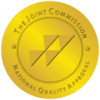What Are Opiates and How Are They So Addictive?


Written By
DreamLife RecoveryThe opioid epidemic is constantly making headlines.
Disturbing statistics suggest that this great plague is decaying our public health. Opiate addiction is now the leading cause of drug overdose in the U.S.
But, what exactly is the reason behind opiates being so addictive?
Well, they represent natural derivatives of the opium poppy plant. They’ve been used for medicine and recreation over many centuries. Today, they take the form of both prescription pharmaceuticals and street drugs.
When it comes to the former, we have popular products like codeine, morphine, and fentanyl. Most of them are classified as a Schedule II drug by the DEA. Others, like heroin, are Schedule I drugs.
This infamous status is due to adverse effects on both the body and mind. Opiates are notoriously addictive, second to no other type of drugs.
So, just because your doctor prescribed something doesn’t mean it’s good for you long-term. Understanding the science behind addiction is the key to the safe zone.
Opiates in a Nutshell
The terms opiate and opioid are used interchangeably.
There’s sound logic behind this—they are quite similar in what they do. Namely, they attach to the same opioid receptors, altering neural processes in our brain. But, we have to be mindful of one important difference.
Opiates are naturally occurring drugs derived from alkaloid compounds in poppy plants. On the other hand, opioids represent synthetic or semi-synthetic drugs created in a man-made process. All opiates are opioids, but the opposite isn’t true.
In other words, not all opioids are naturally-occurring opiates.
Having cleared that out, we should underline their similarities. First off, they both influence the nervous system in a profound way, entering it via a bloodstream. The way our body regulates happiness and pleasure changes profoundly.
Secondly, opiates reduce our perception of pain. That’s why they are widely used to treat acute pain (moderate to severe). Most often, doctors prescribe them after a serious accident or surgery.
Why Exactly Are Opiates Addictive?
The prolonged use of opiates is associated with the risks of abuse and addiction.
We refer to addiction as a continuous, compulsive, and out-of-control use of the drug. Nowadays, it’s no mystery why are so addictive. The body of scientific evidence is huge and growing.
Essentially, opiates replicate our feel-good hormones endorphins and dopamine. Some varieties are so powerful they supercharge the production of these neurotransmitters 100 times. This artificial flood induces immense happiness and euphoria.
Looking To Defeat Addiction?
Get Help TodayThis delightful wave is called rush or high. It holds sway over pain and discomfort, bringing blissful contentment. The problem is that opiate is far from a good supplement for our natural neurochemistry.
Over time, our brain stops producing hormones of pleasure naturally. That’s because it adapts and rewires in an attempt to counter the artificial effects.
The only way to feel pleasure is to consume the drug again. The alternative is to stop the intake entirely. In the latter case, we’re looking at withdrawal and a set of adverse effects.
Common withdrawal symptoms include depression, stress, anxiety, sleep problems, suicidal thoughts, etc. Many users also experience numbness, itching, rashes, constipation, nausea, and small pupils.
This means the body has created psychological and physical dependency on opiates. And at this point, users are quickly sinking into a vicious cycle of addiction and abuse. Prevention of pain and suffering has a terrible price.
Deeper into the Abyss
Important changes occur on a neural and behavioral level.
A brain of an addict starts operating in a different way. It’s dependent on opiate intake and becomes volatile without it. Law of tolerance means abusers need to take increasingly large dosages to get the same high.
Hormone imbalance, mood disorders, and other psychological issues follow.
Furthermore, in the presence of the opiate crave other, natural pleasures pale. Addicts start feeling like they cannot live without opium. They disregard harmful consequences as a price worth paying.
As a result, they exhibit lesser interest in social life, outdoor activities, and hobbies. And that’s just the tip of the iceberg. Addiction can inflict terrible, irreversible damage.
Heart inflammation is a prime example. It increases the risk of suffering a heart attack or stroke. Other, vital body functions can slow down or come to a halt.
In the second case, fatal outcomes ensue.
We know this kind of addiction can affect people of all races, backgrounds, ages, and locations. No one is completely safe.
That being said, many personal factors play a role– history (of substance abuse), family situation, and mental health. Risk-taking and thrill-seeking individuals are among the most vulnerable.
The length of time under the influence is a key indicator as well. The longer you consume opium, the higher the risk of addiction is.
Thus, you always want to take the lowest dose possible. Or, even better, seek alternative treatment plans.
Therapy Offers a Way Out
The truth is there’s no cure for addiction or an official standard for a full recovery.
The good news is treatment is certainly possible. It involves drug rehabilitation, commonly known as drug rehab.
This method entails detoxification, behavioral therapy, and professional supervision. They are aimed at decreasing the likelihood of a relapse. Sometimes, doctors also prescribe opiate replacement medication like methadone.
They are useful as they prevent opiates from affecting brain receptors. Hence, they do away with pleasure and euphoria that lead to opiate longing. In conjunction with other methods, they pose the most reliable recovery path.
The first stage of treatment is the most uncomfortable because it includes withdrawal. Opiates have to leave the system and this process is bound to bring misery.
Another goal of therapy is to address the root cause of addiction. This is where behavioral therapy comes into play to modify destructive thoughts and habits. Complementary approaches are individual/family counseling and group support.
Contrary to that, solitude and isolation tend to do more harm than good. They make it harder for addicts to see the light at the end of the tunnel.
Turning the Tide Against Opiates
Opiates activate powerful reward centers in our brains.
They dramatically amplify feelings we associate with happiness. At the same time, they ward off pain and discomfort.
In the process, however, our capacity to experience pleasure naturally is hampered. Opiates keep withdrawal symptoms at bay only to push the user deeper into the hole of addiction.
As the dosage wears off, you want the same high again. Before you know it, you’ve created severe physiological and psychological dependence on the substance. Comfort turns into torture and tolerance builds up.
That is why opiates are so addictive and such a poor long-term treatment option. Their abuse requires medical care and attention, as well as support from friends, community, and family.
On a broader scale, we have to rethink our strategies of tackling the national health crisis. Education on risks and dangers is paramount to this endeavor.
Contact us right now if you or your loved one needs opiate addiction treatment in Pennsylvania. The time to act would be now.






